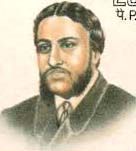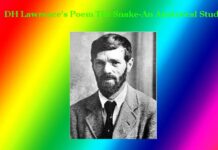The Poetry of Michael Madhusudan Dutt-Chief Features
The Poetry of Michael Madhusudan Dutt-Chief Features
Michael Madhusudan Dutt (1824- 1873) was a major poet of the introductory age of Indo- Anglian Poetry. He added a new vitality and grace employing lofty themes of Indian legends and comparatively higher style to the Indo- Anglian poetry, which was recently given birth to by Henry Derozio and nursed tenderly by Kasiprasad Ghose till him. For his poetry, he selected those themes from Indian legends and myths which bore the pride and glory of ancient India.
‘The Captive Lady’ is a poem the matter of which is taken from a historical legend of eleventh-century India. Through this poem, the poet has portrayed the devotion of an Indian woman to her husband. The heroine of the poem is the royal daughter of the King of Kanuj. The king did not want to give his daughter in marriage to the King of Delhi. But eventually, the King of Delhi married her. Some years later to that marriage, the Sultan of Ghazni named Mahmud invaded India and crushed the king. The Queen of Delhi then burnt herself in the funeral pyre of her dead husband.
‘King Porus- A Legend of Old’ is another poem the matter of which has been taken from the history of ancient India. Through this poem, the poet has delineated the patriotism of King Porus. Besides, being a patriot, he was a great hero also as he fought very bravely against Alexander the Great. In the battle between the two, King Porus was defeated and then he was taken to Alexander from whom Porus demanded the treatment of a king. In the words of the poet:
”King Porus was no slave;
He stooped not- bent not there his knee-
But stood as stands an oak,
in Himalayan majesty
‘How should I treat thee?’ Asked
The mighty king of Macedon
‘Even as a king’, he replied
In royal pride.”
The Poetry of Michael Madhusudan Dutt-Chief Feature
Like these poems, all his major poems deal with the Indian legends through which he revived the pride and glory of ancient India. In ideal, the Indian legends are lofty and it was Michael Madhusudan Dutt who first revived them in poetry with a new spirit and held them up outside India.
He, besides Indian legends, took the Biblical themes also. The poem with the title ‘Satan’ is such a poem. In it, he has shown the sufferance of Satan after his fall from heaven.
As the themes and matters of his poetry are lofty so is his style. In the Indo- Anglian Poetry before him, the use of imagery was limited. The poets prior to him used simple and common imageries. But Madhusudan employed higher imageries which are self-explaining in themselves. His imageries are vivid and perfect. In other words, to say, his imageries are grand if compared to the imageries of his predecessors. In the poem ‘Satan’ he uses two imageries to show Satan’s forlorn state after his fall. He stated Satan’s downfall in the hand of God through the following grand imagery, as-
”…..like a barque which oft had walked the deep
In queen like majesty- and proudly brave-
But by the fiery hand of some fiend
Nursed in starless caves of ocean shorn
Of all its beauty in the boundless surge
A phantom of departed splendor tone.”
The Poetry of Michael Madhusudan Dutt-Chief Feature
The imagery reminds us of the imagery used by John Milton in ‘Paradise Lost’. Though all his imageries are not like that of Milton, yet it is visible that his imageries have a new grace and spirit of spontaneity than the imageries used by his predecessors. For example, the following lines may be quoted:
”Loudly thy midnight tempest sang
Ah! It was thy dirge, fair to liberty!
And clouds in thundering accents roar’d
Unheeded warning from on high;
The rain in darksome torrents fell,
Hydaspes waves did onward sweep
Like fiery passions headlong flow.
To meet its awakened calling deep
The lightning flashed bright- dazzling like
Fair woman’s glance from ‘neath her veil,
And on the heaving troubled air,
There was a moaning sound of wail!”
The Poetry of Michael Madhusudan Dutt-Chief Feature
This imagery symbolizes the immediate peril presaging the invasion of Alexander the Great. Moreover, Madhusudan Dutt proves himself to have the commanding power of creating similes. He uses four similes to express the strength and heroic courage of King Porus, as-
(i)dauntlessly there stood
King Porus, towering ‘midst the foe
Like a Himalaya peak
With its eternal crown of snow.
(ii)he stood- as stands the ocean rock
Amidst the lashing billows
Unmoved at their fierce thundering shock.
(iii)…..stood as stands an oak
In Himalayan majesty
(iv)Thou standest like a lofty tree
Shorn of fruits- blossoms- leaves and all-
Of every gale……..
The Poetry of Michael Madhusudan Dutt-Chief Feature
The simile is a common and much-used figure of speech. But most similes are simple, which generally show the comparison of names only. The similes which are developed to show the characteristics of the thing compared may be called grand similes. And if it is called so, so are the similes of Madhusudan Dutt.
Besides this, the poet has used dashes abundantly like that of Emily Dickinson, an American poetess. The use of some of them is appropriate, some have played the roles of Aposiopesis (it is a figure of speech by which a writer or speaker suddenly breaks off from what he was going to say and leaves the sentence incomplete as if unable to continue or unwilling to say) and some of which are superfluous.
In the poem entitled Satan, a fourteen-line poem, he has used seven dashes many of which are superfluous.
From the above illustration of Madhusudan Dutt’s poetry, it has come to the clarification that he as a poet was a grand addition to the list of Indo- Anglian Poets of the initial stage. 0 0 0
The Poetry of Michael Madhusudan Dutt-Chief Features
N.B. The article ‘The Poetry of Michael Madhusudan Dutt-Chief Features’ originally belongs to the book ‘Indian English Poets and Poetry-Chief Features‘ by Menonim Menonimus.
Books of Composition by M. Menonimus:
- Advertisement Writing
- Amplification Writing
- Note Making
- Paragraph Writing
- Notice Writing
- Passage Comprehension
- The Art of Poster Writing
- The Art of Letter Writing
- Report Writing
- Story Writing
- Substance Writing
- School Essays Part-I
- School Essays Part-II
- School English Grammar Part-I
- School English Grammar Part-II..
Related Search:











